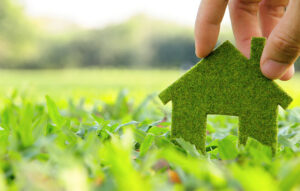What to Look for in an Environmental-Friendly Planner

Did you know that an estimated 80,000 to 160,000 trees are cut down every day across the world? That is an alarming number of trees cut down to produce products, including paper. In fact, a large portion of harvested trees goes straight to the paper industry.
Recycling is one of the best, and simplest, ways that consumers can be more environmentally friendly. Every ton of recycled paper prevents 17 trees from being cut down, 165 gallons of gasoline being used, and 7,000 gallons of water being used. Unfortunately, the majority of standard paper products are not recycled.
Paper products like planners are often purchased new each year, and then are thrown away at the end of the year. But now, more planner manufacturers are emerging with eco-friendly planner options to reduce waste and better protect the environment and ecosystem. But how do you know if a planner is eco-friendly?
What to Look for in an Eco-Friendly Planner
Below, we provide some helpful tips for finding an eco-friendly planner that supports the environment without sacrificing what you love about organization. To be eco-friendly, a planner must meet the following criteria:
Be Ethically Made
To be ethically made, a product must be manufactured using ethically-sourced materials. That means materials harvested are not detrimental to the environment or ecosystem. Additionally, manufacturing processes should be ethical, such as fair labor and wages, good working conditions, etc.
Be Sustainably Packaged
Sustainable packaging means that new products are packaged and shipped in eco-friendly materials. Some examples of eco-friendly and sustainable packaging are:
- Compostable packing peanuts
- Recycled cardboard
- Compostable containers
- Cellulose-based materials (instead of plastic)
In essence, sustainable packaging is made from materials that can be easily broken down or repurposed without being harmful to the environment.
Be Non-Toxic or Toxic Free
A surprising amount of consumer products contain ingredients or compounds that are actually harmful to the environment and humans. That’s why it is so important to look for products that are non-toxic or toxic free. What’s the difference?
- Non-Toxic: Non-toxic is an umbrella term used by regulating agencies to identify products that are not likely to cause harm.
- Toxic Free: Toxic free labeling is not regulated by the government, but it is something that consumers can look for. To be “toxic free” certified by the ToxicFree Foundation, a product must contain only 100% natural materials.
Purchasing non-toxic or toxic free products is a great way to be more environmentally friendly and support a healthy ecosystem. Products that are manufactured using harmful or toxic chemicals can produce waste that leaches into groundwater and contaminates wildlife, and, potentially humans.
Are There Good Eco-Friendly Planner Options?
Finding an eco-friendly planner may take a bit more work than a trip to your local department store. But if you want to be more environmentally conscious, it is a great place to start. There are many brands that offer eco-friendly planner options – from recycled materials to planting trees, seeded paper to compostable materials – there are truly great and creative ways to support your environment.





